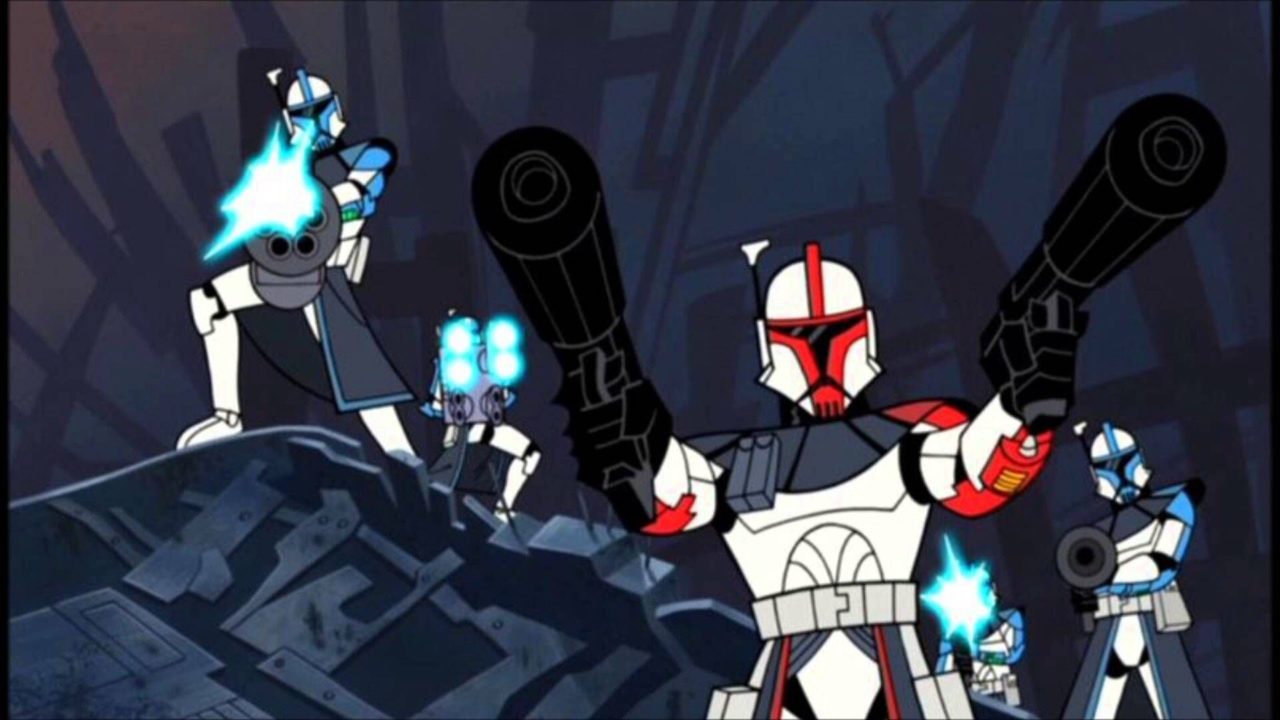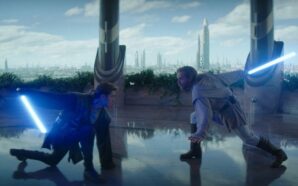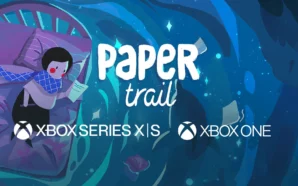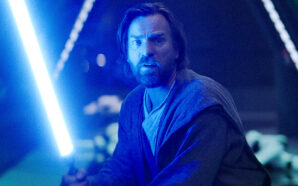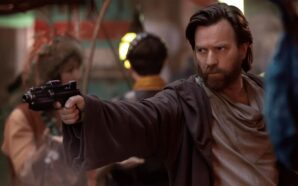While consistent in regards to style and quality of animation with the first, the second volume (or third season) of Genndy Tartakovsky’s Star Wars: Clone Wars feels like a completely different show when it comes to storytelling and structure. Having never seen it before I was expecting more of the breathless, constant action that dominated the short serial-esque episodes of the first volume, and while it is still action packed, the show has evolved into something deeper. This change radiates from the new episode length, going from the 3-to-7-minute instalments of the first two seasons to 15-minute episodes in the third. This volume is designed to be watched edited together as a single piece and the extended run time allows the show to pause on occasion and be more introspective.
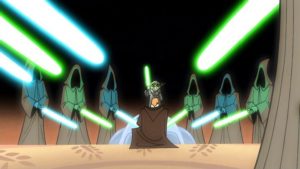 Volume 2 feels like a middle ground between the first volume and the 3D animated series that would follow. While the season will eventually showcase huge battles, at the start it actively avoids them. Obi-Wan and Anakin are on an alien world preparing to invade a separatist stronghold but when the time comes, instead of following the clones into battle, we track the two Jedi walking away from the conflict and follow them to Coruscant for a Jedi council meeting. Such scenes would be impossible in the first volume considering its unquenchable thirst for action but the show is now given room to breathe, and can have characters actually debate the war rather than just relish in showing it. This new patient stance is commented on in an almost meta way in one of my favourite interactions of the series:
Volume 2 feels like a middle ground between the first volume and the 3D animated series that would follow. While the season will eventually showcase huge battles, at the start it actively avoids them. Obi-Wan and Anakin are on an alien world preparing to invade a separatist stronghold but when the time comes, instead of following the clones into battle, we track the two Jedi walking away from the conflict and follow them to Coruscant for a Jedi council meeting. Such scenes would be impossible in the first volume considering its unquenchable thirst for action but the show is now given room to breathe, and can have characters actually debate the war rather than just relish in showing it. This new patient stance is commented on in an almost meta way in one of my favourite interactions of the series:
“The siege goes well. With our continued barrage their shields should be down in three months”
“But we’ve been here a month already”
“Yes sir, we’re right on schedule”
Yoda, having a vision of little Ani and Qui-Gon at the dark side cave on Dagobah, decides it’s time to make Anakin a Jedi knight. This is something missing from the current canon and while I understand the 3D Clone Wars show didn’t want to retell the same stories as the 2D show, there are plenty of missing pieces when it comes to the early days of the war in the current continuity. I also enjoy how often Qui-Gon is mentioned and the long shadow he clearly casts over Anakin and Obi-Wan, which isn’t explored as much in the 3D series. The knighting ceremony is a fun scene if a little overdramatic, with Yoda literally knighting Anakin with his lightsaber and cutting off his braid. But there are questions over whether Anakin is ready and his “trial of the spirit” hasn’t yet been performed. Whereas Obi-Wan and Anakin were in the middle of the action in Volume 1, here they leave the grandiose battles behind and have their own more introspective adventure.
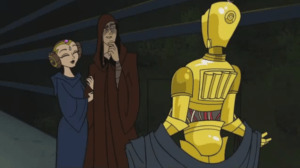 Before he leaves on his latest mission, Anakin first has a secret meeting with Padme in a dark alley on Coruscant. I do wish Padme had more to do this season, especially considering the war arrives at the capital about 15-minutes later. R2-D2 is gifted to Anakin which is a detail I always wondered about. C-3PO is Anakin’s droid, yet he kinda stole him from the Lars homestead in Attack of the Clones, and R2-D2 is Padme’s droid yet at some point during the war they swap. I guess I always presumed they exchanged them as wedding gifts. C-3PO reveals, somewhat saucily, his new gold plating and even this detail offers a deeper look at the Star Wars galaxy than I was expecting. In order to be a senator’s droid, he has to be plated with gold, but because the meeting is taking place in the lower levels of Coruscant, he fears being stripped of his plating by the poor and needy. It’s a funny moment that actually brings up classism in the galaxy far far away.
Before he leaves on his latest mission, Anakin first has a secret meeting with Padme in a dark alley on Coruscant. I do wish Padme had more to do this season, especially considering the war arrives at the capital about 15-minutes later. R2-D2 is gifted to Anakin which is a detail I always wondered about. C-3PO is Anakin’s droid, yet he kinda stole him from the Lars homestead in Attack of the Clones, and R2-D2 is Padme’s droid yet at some point during the war they swap. I guess I always presumed they exchanged them as wedding gifts. C-3PO reveals, somewhat saucily, his new gold plating and even this detail offers a deeper look at the Star Wars galaxy than I was expecting. In order to be a senator’s droid, he has to be plated with gold, but because the meeting is taking place in the lower levels of Coruscant, he fears being stripped of his plating by the poor and needy. It’s a funny moment that actually brings up classism in the galaxy far far away.
After Anakin is knighted, the series jumps three years into the future to the very end of the war, another detail that sets it apart from the first volume. Whereas once the show was heavily inspired by Attack of the Clones, given at the time that was the only glimpse of the titular conflict we had seen, Volume 2 was clearly produced with knowledge of Revenge of the Sith and this is very apparent in the visual style. The ships and character designs are now all consistent with the final film of the prequel trilogy and therefore the 3D series too. Skipping over years’ worth of conflict does feel like a bit of missed opportunity and the show was clearly restricted by when it was released. This final season’s purpose was to directly set up Revenge of the Sith rather than explore the war in its own way, and it aired the week before the film released. It’s worth remembering that the microseries was intended as an advert for action figures first and foremost.
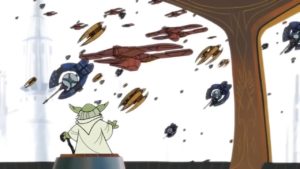 Ever since first seeing Coruscant in The Phantom Menace, as some small, deranged part of my mind always does when I see something beautiful, I wondered what it would look like on fire. I love the planet so much and always hope, with each Star Wars project released, that we’ll see it again. From the tall skyscrapers to the squalid lower levels, it’s the perfect place for an awesome battle on both ground and in the air. We almost saw such a thing in Colin Trevorrow’s Episode IX but it wasn’t to be. And while I love some elements of his script, I’m ultimately glad we got Rise of Skywalker instead, flaws included, because Trevorrow completely misunderstands the concept of balance in the force. It was childlike glee then that I realised I would see the Battle of Coruscant play out in this animated form and, while not the barnstormer it could have been, it did scratch that particular itch… for now.
Ever since first seeing Coruscant in The Phantom Menace, as some small, deranged part of my mind always does when I see something beautiful, I wondered what it would look like on fire. I love the planet so much and always hope, with each Star Wars project released, that we’ll see it again. From the tall skyscrapers to the squalid lower levels, it’s the perfect place for an awesome battle on both ground and in the air. We almost saw such a thing in Colin Trevorrow’s Episode IX but it wasn’t to be. And while I love some elements of his script, I’m ultimately glad we got Rise of Skywalker instead, flaws included, because Trevorrow completely misunderstands the concept of balance in the force. It was childlike glee then that I realised I would see the Battle of Coruscant play out in this animated form and, while not the barnstormer it could have been, it did scratch that particular itch… for now.
The shots revealing the beginning of the invasion are masterful. First, we see Yoda meditating before suddenly whipping around to see the sky full of separatist ships, a look of pure shock on his face and hopefully the viewer’s too. Then, by contrast, we see Palpatine gazing out of his window but he’s totally calm, sipping tea in fact, as he witnesses his masterplan of destruction play out before him. I do wish the battle took place in some different areas of the planet rather than, seemingly, one district because there’s so much potential of cool action on Coruscant. Instead, it’s the same minimalist white buildings that are the focus. There are some cool moments however, including an entire clone squadron leaping from a burning ship to an enemy vessel, a four-throated Ithorian Jedi screaming at some droids, and a lightsaber fight in a busy train station that ranks among the best of the franchise. However, the excessively strong force powers return and Yoda, who had to concentrate to lift an X-Wing in Empire, can now destroy huge ships with a flick of the wrist.
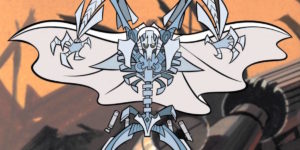 Appearing briefly at the end of the first volume, General Grievous is the primary antagonist of the story, and this version of the character is quite the departure from his big screen counterpart. I can see why viewers introduced to Grievous through the show would be disappointed with him in Revenge of the Sith. In the film, and the 3D series, he’s a coughing coward more than he is a menacing fighter but the 2D series paints him instead as a pure horror villain. An unrelenting force who appears in an instant and won’t stop until his adversaries are dead. He’s also voiced by Richard McGonagle who plays Sully in the Uncharted games, a fact which is currently making my head explode. As much as I may defend Grievous as an underrated and more nuanced character than many give him credit for, I admit, he’s entertainingly badass in the microseries. And, for canon’s sake, his chest is crushed by Mace Windu at the end of the show, explaining his voice change and cough in Revenge of the Sith.
Appearing briefly at the end of the first volume, General Grievous is the primary antagonist of the story, and this version of the character is quite the departure from his big screen counterpart. I can see why viewers introduced to Grievous through the show would be disappointed with him in Revenge of the Sith. In the film, and the 3D series, he’s a coughing coward more than he is a menacing fighter but the 2D series paints him instead as a pure horror villain. An unrelenting force who appears in an instant and won’t stop until his adversaries are dead. He’s also voiced by Richard McGonagle who plays Sully in the Uncharted games, a fact which is currently making my head explode. As much as I may defend Grievous as an underrated and more nuanced character than many give him credit for, I admit, he’s entertainingly badass in the microseries. And, for canon’s sake, his chest is crushed by Mace Windu at the end of the show, explaining his voice change and cough in Revenge of the Sith.
While the battle on Coruscant rages, Anakin faces an impromptu “trial of the spirit” on an alien world as he tries to rescue a group of aliens from cyborg experimentation by the Techno Union. This mission does a great job of showing Anakin as a hero but one who goes too far and too often lets his emotions take over. While he doesn’t fall to the dark side quite yet, he does tap into darkness for what he feels is a noble purpose. I really enjoy the complex take on Anakin/Vader as more than a straight villain and moments like this, and those in the 3D show, make his quick turn to the dark side in Revenge of the Sith more understandable. He saves the natives and is almost worshipped by them, giving him a glimpse of power, but whereas they remove their mechanical implants, Anakin uses his robotic hand, which is eventually removed, purely for destruction. His arm and scar are symbols of the darkness within and an outlet for them when he’s pushed to the edge. He’s even granted a force vision of what could become of him, bringing to mind the Mortis arc.
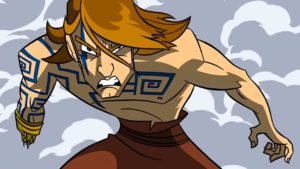 The microseries ends where Revenge of the Sith begins: Palpatine is kidnapped and Obi-Wan and Anakin race to Coruscant to rescue him, the potential for darkness brewing in Anakin’s soul. The first volume of the show has some great moments and well-produced animation but I ultimately found it to be an exhausting watch, if not migraine-inducing. But the new format for Volume 2 allowed for a better-paced and deeper season which still had some brilliant action beats. While the 3D series is dear to my heart and I’m forever rewatching it, the 2D series is a fun pulpy action serial and there’s certainly a place for that in Star Wars. While it’s not my favourite piece of extended animated content – The Bad Batch 70-minute premiere showed what animated Star Wars can do – I was a little sad when Volume 2 came to an end and I had watched all that there was. However, I see it as required viewing to start watching Revenge of the Sith immediately after the credits roll. If that’s anything to go by, the show is a success.
The microseries ends where Revenge of the Sith begins: Palpatine is kidnapped and Obi-Wan and Anakin race to Coruscant to rescue him, the potential for darkness brewing in Anakin’s soul. The first volume of the show has some great moments and well-produced animation but I ultimately found it to be an exhausting watch, if not migraine-inducing. But the new format for Volume 2 allowed for a better-paced and deeper season which still had some brilliant action beats. While the 3D series is dear to my heart and I’m forever rewatching it, the 2D series is a fun pulpy action serial and there’s certainly a place for that in Star Wars. While it’s not my favourite piece of extended animated content – The Bad Batch 70-minute premiere showed what animated Star Wars can do – I was a little sad when Volume 2 came to an end and I had watched all that there was. However, I see it as required viewing to start watching Revenge of the Sith immediately after the credits roll. If that’s anything to go by, the show is a success.
Which volume of Tartakovsky’s Clone Wars microseries do you prefer? Let me know in the comments and be sure to geek out with me about TV, movies and video-games on Twitter @kylebrrtt.




